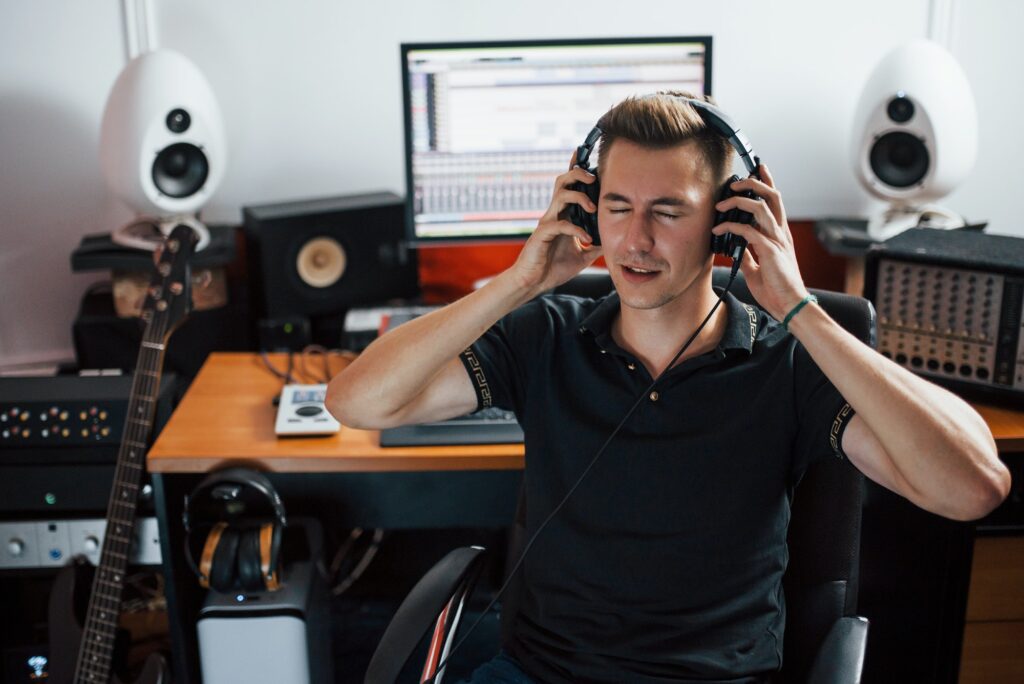
In the fast-paced world of content creation, one element that often gets overlooked is the importance of sound quality. However, for those in the know, proper checking and tweaking of audio is essential to producing top-notch content. Whether you’re a YouTuber, podcaster, or filmmaker, ensuring that your audience is hearing your message loud and clear is crucial.
Sound quality can make or break any form of media. Distorted audio, background noise, or poor balance can lead to a frustrating listening experience and turn off your audience. On the other hand, pristine audio can captivate and engage your viewers, elevating your content to new heights.
Without proper attention to sound quality, even the most visually stunning videos or well-written podcasts can fall flat. Don’t let all your hard work go to waste; invest time and effort into checking and tweaking your audio to ensure that it matches the quality of your visuals or script.
In this article, we will explore the reasons why sound quality matters for content creators and provide practical tips on how to improve and optimize your audio. So don’t hit that upload button just yet – let’s dive into the world of audio and discover why it truly matters.
- How Sound Quality affects the viewer/listener experience
- Common audio issues and their impact on content
- Tools and techniques for checking Sound quality
- Steps to properly tweak and enhance audio
- The role of equalization and compression in improving sound quality
- Best practices for recording high-quality audio
- Importance of consistent audio levels and volume control
- The impact of background noise and how to mitigate it
How Sound Quality affects the viewer/listener experience

When it comes to content consumption, people have come to expect high-quality audio. Our ears are incredibly sensitive, and even minor issues can be noticeable and distracting. Poor sound quality can disrupt the viewer or listener’s immersion, making it difficult for them to focus on the content itself. On the other hand, well-crafted audio can enhance the overall experience, making the audience feel more connected and engaged with the content.
Additionally, sound quality can impact the perception of professionalism. If your audio sounds unprofessional or amateurish, it can undermine the credibility of your content and your brand as a whole. Conversely, high-quality audio can signal that you are serious about your craft and can leave a lasting impression on your audience.
Common audio issues and their impact on content
There are several common audio issues that content creators should be aware of. One of the most prevalent issues is distorted audio. Distortion occurs when the audio signal is pushed beyond its limits, resulting in a harsh, unpleasant sound. This can occur due to improper microphone placement, too high recording levels, or inadequate equipment.
Another common issue is background noise. Whether it’s the hum of an air conditioner, the buzz of fluorescent lights, or the sound of traffic outside, background noise can be a major distraction. It can make it difficult for your audience to focus on what you’re saying and diminish the overall listening experience.
Uneven audio levels and poor balance can also be problematic. If certain parts of your content are too loud or too soft, it can be jarring for your audience. It’s important to ensure that all elements of your audio, such as dialogue, music, and sound effects, are properly balanced to create a seamless listening experience.
Tools and techniques for checking Sound quality

Fortunately, there are tools and techniques available to help content creators check and improve their audio quality. One essential tool is a good pair of headphones. Investing in a high-quality set of headphones will allow you to hear every detail of your audio and identify any potential issues.
Audio editing software is another valuable tool. Programs like Adobe Audition or Audacity provide a range of features to help you analyze and enhance your audio. They allow you to visualize the audio waveform, apply effects such as equalization and compression, and remove background noise.
When checking your audio, it’s important to listen critically. Take the time to listen to your content in different environments and on different devices to ensure that it sounds good across the board. Pay attention to the clarity of the dialogue, the overall balance, and any potential distractions or issues that may arise.
Steps to properly tweak and enhance audio
Once you’ve identified any issues in your audio, it’s time to take steps to tweak and enhance it. One of the most fundamental techniques is equalization. Equalization allows you to adjust the frequency balance of your audio, ensuring that each element sounds clear and balanced. It can help to remove any unwanted frequencies and enhance the overall clarity.
Compression is another powerful tool for improving sound quality. Compression helps to even out the dynamic range of your audio, making soft sounds louder and loud sounds softer. This can help to create a more consistent listening experience and ensure that all elements of your content are audible.
In addition to equalization and compression, there are other effects and techniques you can utilize to enhance your audio, such as reverb, delay, and noise reduction. Experimenting with these tools can help you achieve the desired sound for your content.
The role of equalization and compression in improving sound quality
While post-production editing can go a long way in improving sound quality, it’s important to start with a solid foundation. Recording high-quality audio from the start will save you time and effort in the editing process. Here are some best practices for recording:
1. Invest in a good microphone: A high-quality microphone is essential for capturing clear and accurate audio. Consider the type of microphone that best suits your needs, whether it’s a dynamic microphone for podcasts or a shotgun microphone for video production.
2. Choose the right recording environment: Find a quiet space with minimal background noise to record your audio. Consider using soundproofing materials or a portable vocal booth to reduce echoes and unwanted reflections.
3. Position the microphone correctly: Proper microphone placement is crucial for capturing clear audio. Experiment with different positions to find the optimal placement for your microphone and adjust the distance to achieve the desired sound.
4. Monitor your audio levels: Keep an eye on your audio levels while recording to ensure that they are not too high or too low. Avoid clipping, which occurs when the audio signal exceeds the maximum level, as it can result in distorted audio.
5. Use a pop filter: A pop filter helps to reduce plosive sounds, such as “p” and “b” sounds, which can cause unwanted bursts of air hitting the microphone. This simple accessory can greatly improve the clarity of your recordings.
Best practices for recording high-quality audio
Consistency is key when it comes to audio levels. It’s important to ensure that your content has a consistent volume throughout to provide a pleasant listening experience. Sudden changes in volume can be jarring and disruptive for your audience.
When editing your audio, pay attention to the overall volume levels and make adjustments as needed. Use volume automation to smooth out any inconsistencies and ensure that your content is balanced and cohesive.
Volume control is also crucial when it comes to music and sound effects. Make sure that the levels of your background music or sound effects are balanced with the dialogue and do not overpower or overshadow it. Finding the right balance will enhance the overall listening experience and prevent any distractions.
Importance of consistent audio levels and volume control
Background noise can significantly impact the quality of your audio. It can distract your audience and diminish the clarity of your content. Fortunately, there are several techniques you can use to mitigate background noise:
1. Choose a quiet recording environment: As mentioned earlier, finding a quiet space to record is essential. Minimize external noise as much as possible by closing windows, turning off fans or air conditioning units, and avoiding areas with heavy foot traffic.
2. Use a directional microphone: Directional microphones, such as shotgun microphones, are designed to pick up sound from a specific direction while rejecting sounds coming from other directions. This can help to minimize background noise and capture cleaner audio.
3. Use audio editing software: If you still have background noise in your recordings, you can use audio editing software to remove or reduce it. Tools like noise reduction or spectral editing can help you isolate and eliminate unwanted noise.
The impact of background noise and how to mitigate it
Sound quality is a crucial aspect of content creation that should not be overlooked. Investing time and effort into checking and tweaking your audio can elevate your content and provide a more engaging experience for your audience.
By understanding the impact of sound quality on the viewer/listener experience and being aware of common audio issues, you can take the necessary steps to improve your audio. Utilizing tools and techniques for checking and enhancing audio quality, as well as following best practices for recording, will help you achieve professional and high-quality sound.
Remember, consistent audio levels, proper volume control, and mitigation of background noise are all essential elements in creating top-notch content. By ensuring excellent sound quality, you can captivate and connect with your audience on a deeper level, taking your content to new heights of success. So don’t hit that upload button just yet – take the time to check and tweak your audio, and let your message resonate loud and clear.
